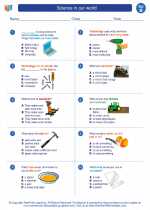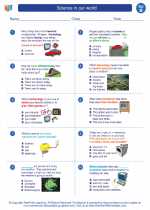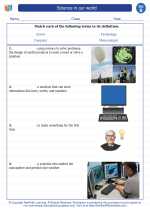Wind Patterns
Wind patterns are the prevailing direction and strength of winds in a particular region. These patterns are influenced by a combination of factors including the rotation of the Earth, the distribution of land and water, and the varying intensity of solar radiation across the globe.
Factors Affecting Wind Patterns
Several key factors influence wind patterns:
- Coriolis Effect: The rotation of the Earth causes winds to be deflected to the right in the Northern Hemisphere and to the left in the Southern Hemisphere, leading to the creation of large-scale wind patterns such as the trade winds and westerlies.
- Pressure Gradients: Differences in air pressure between high and low-pressure systems drive the movement of air, resulting in the development of wind patterns.
- Land and Water Distribution: Variances in the heating and cooling of land and water surfaces lead to the formation of local wind patterns, such as sea breezes and land breezes.
- Topography: The presence of mountains and valleys can alter wind patterns by influencing the flow of air over the Earth's surface.
Global Wind Patterns
On a global scale, the Earth's rotation and the distribution of land and water give rise to distinct wind patterns. These include:
- Trade Winds: Consistent easterly winds that flow towards the equator from the subtropical high-pressure belts.
- West Winds: Prevailing westerly winds found in the mid-latitude regions.
- Polar Easterlies: Cold winds that blow from the polar high-pressure areas towards the subpolar low-pressure regions.
- Intertropical Convergence Zone (ITCZ): A region near the equator where trade winds from the Northern and Southern Hemispheres converge, leading to a zone of low pressure and often heavy rainfall.
- Horse Latitudes: Subtropical regions where high-pressure systems create calm, light winds.
Local Wind Patterns
In addition to global wind patterns, local factors can create specific wind patterns in certain areas. These include:
- Sea Breezes: Daytime winds that blow from the sea towards the land due to differential heating between the water and the adjacent land.
- Land Breezes: Nighttime winds that flow from the land towards the sea as a result of the cooling of the land surface.
- Mountain and Valley Breezes: The differential heating and cooling of mountain slopes and valley floors can lead to the development of distinct wind patterns in these topographic features.
Study Guide
When studying wind patterns, it's important to understand the various factors that contribute to the creation of global and local winds. Here are some key concepts to focus on:
- Describe the Coriolis effect and its impact on wind direction in the Northern and Southern Hemispheres.
- Explain the formation of global wind patterns such as the trade winds, westerlies, and polar easterlies.
- Discuss the influence of pressure gradients on wind movement and the development of wind patterns.
- Identify and explain local wind patterns such as sea breezes, land breezes, and mountain/valley breezes.
- Illustrate how the distribution of land and water, as well as topographical features, can shape wind patterns in specific regions.
Understanding wind patterns is essential for comprehending weather systems, climate dynamics, and their impact on various regions around the world.
.◂Science Worksheets and Study Guides Second Grade. Science in our world

 Worksheet/Answer key
Worksheet/Answer key
 Worksheet/Answer key
Worksheet/Answer key
 Worksheet/Answer key
Worksheet/Answer key
 Vocabulary/Answer key
Vocabulary/Answer key
